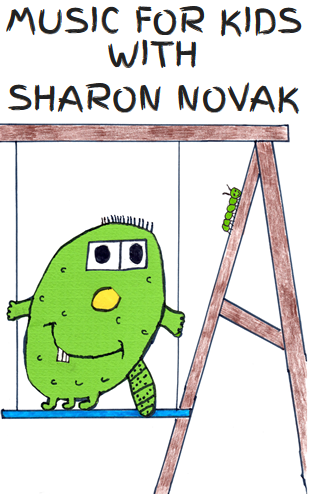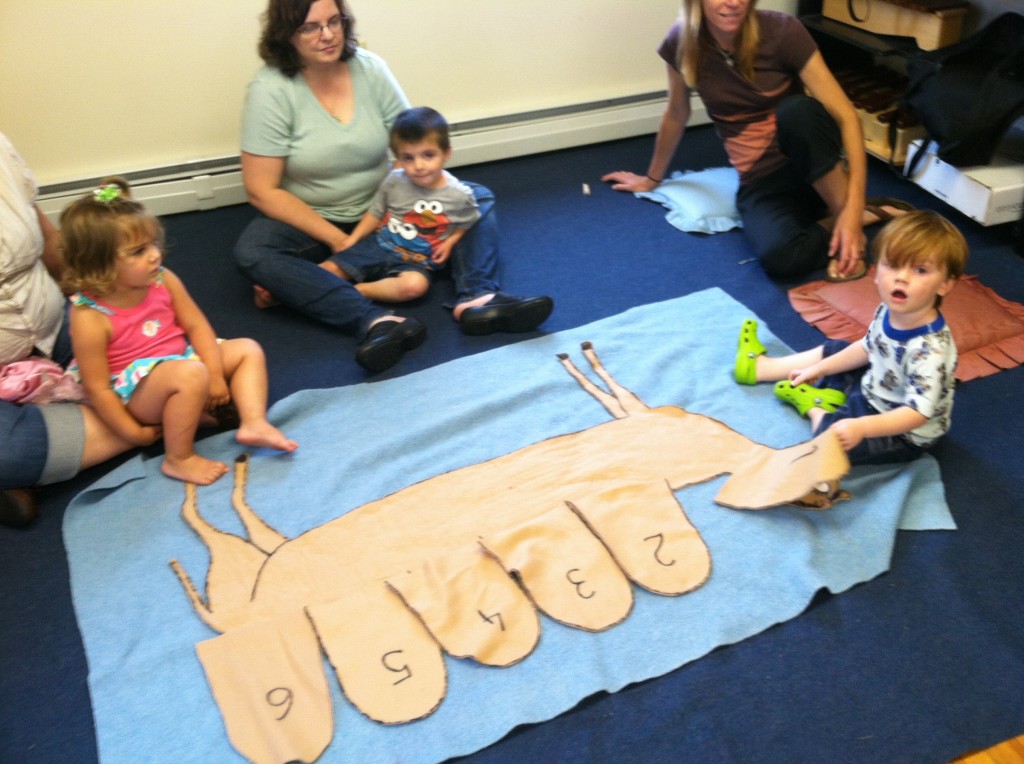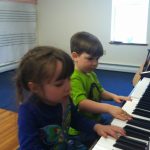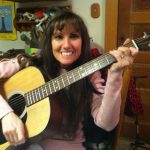Using Movement and Manipulatives in a Preschool Music Class
When teaching music to preschoolers, the first thing we must do is to make sure that they are interested and able to understand the concepts. Teaching very young children is not the same as teaching adults. Young children are not ready to learn so many concepts that we as adults take for granted.
Now before I even begin my more complex lessons, I always begin my classes with movement activities using songs that I have written and songs you will find on my CDs. This will start them feeling music and rhythm. These are great warm up and mixer activities for my preschoolers as they often come into my class a little shy. Children will specifically dress in clothes that have many colors before they come to my class because they know that I am going to do the Color Song” (“The Color I See”). These are the fun things that make them want to come back. After these warm up activities my children are ready to learn.
Now as a teacher, I am all about teaching with success. I never force children to learn any concepts that are a little too difficult for them. I simply introduce concepts and repeat them from week to week. Repetition is so important with preschoolers. Children slowly begin to grasp all of these concepts if we are patient.
These are basic concepts that I will teach in my Preschool Music Class at Mountain Top Music Center:
1. When teaching rhythm counting beats alone is not sufficient. We have to allow them to move their bodies in some way to keep their interest and help them feel the beat. I will have them tap sticks together or tap them on the floor, tap a drum, use body movements like maybe patting their knees. Sometimes I will count, but I will often use a beat machine or stomp my feet to help them hear the beat while they are doing body movements. They love variety so I change the movements to make it more fun. Later in the year I will find out if they have learned when I will play my guitar and let them follow me on instruments that I have given them. One of the best songs to use is “The Ants Go Marching One by One.” I always stomp my feet to the beat while I am playing and singing so that they can follow me.
2. When working with pitch with preschoolers, I start with sol, mi and use songs like “Rain, Rain, Go Away”, or “Ring Around the Rosy.” I start with even simpler tunes like “The Counting Song.” I have found these and more songs for sol, mi and sol, mi, la pitch in “The Kodaly Method: Comprehensive Music Education From Infant to Adult” by Lois Choksy (1974, Prentice-Hall, Inc., Englewood Cliffs, New Jersey). We simply raise our hands up for the solfege sign for sol and then down for the solfege sign for mi. They can see the high low with our hands. They “Pussy Willow Song” is another great song for pitch. We gradually raise our bodies while the pitch goes up, until at the end we are standing up. We then gradually lower our bodies as the pitch goes down (“I Know a Little Pussy” http://bussongs.com/songs/i-know-a-little-pussy.php ). These are just a few examples. Now, these are not the only songs we sing, but these give consistent pitch lessons each time we meet. I always sing familiar songs with children before we do this activity.
3. Teaching beats for quarter notes and then eighth notes follows a similar pattern depending on the method you use. I use the Kodaly Method very often because it is consistent with its words for note value (“ta” for a quarter note and “ti” for an eighth note). Different animal names can be used also. I have children learn to tap the beats of the melody rhythm while singing it. I tell them to let their sticks follow their mouths as the say the words to the song. Then we say ta, ta, ti-ti, ta or whatever rhythm we are using in the song. I have them use craft sticks to draw the pattern from left to right. They copy what I have drawn. This is such a great pre-reading skill as are all of these activities. Parents should really take notice with how music definitely prepares the brain for learning.
4. I almost always add the xylophone to this activity so that the children can play sol, mi pitches. Again, they love the hands on experience. Success with this activity varies with age. I help them but never force them to get this perfectly. Many 3 year old children struggle with alternating hands from note to note. I just let them play them together if my attempts to get them to do otherwise fail. They will learn as the weeks go on and as they get older.
5. Now I have created a felt staff with felt notes. Children love finding the lines or spaces on the staff to place felt notes on. I use whole notes because they are easier for little fingers to manipulate. I repeat the same notes from week to week. I will occasionally change keys, but I rarely use more then 2 different keys per session. Keep it simple!
6. I will often give preschoolers a chance to draw the notes and rhythm symbols on a paper with a staff on it. Most preschoolers love the opportunity to draw! I like having the ones who know how write their name on the paper also. Parents enjoy this addition.
These are my basic activities. Sometimes I will have children play piano, the recorder, a small guitar or other instruments in my classes as well. As you can see, there is no way that I can fit all of of these activities in one class so each class will vary.
I always end my classes with a fun felt activity that I have created like Aikendrum where they put on the body parts as I sing about them. These kind of activities are great for teaching preschoolers to listen and follow directions at the right time. This is also a music skill as well as a basic classroom skill. Music classes for preschoolers are excellent for preparing them for music lessons in the future or even just preparing them for following directions in school.
Very often activities 2 – 4 happen around one feature song such as “The Counting Song.” If I use “Ring Around the Rosy,” we get to do the movement activity for the song first. Activity 1 is usually done with a different song.
In some satellite preschool classes I tend to limit the solfege and melody rhythm activities as attention spans vary from group to group. Again, my number one rule is have fun! Then children will learn.
This is a brief description of what my preschool classes look like. Please refer to this link for help with symbols. http://www.midnightmusic.com.au/2011/08/sibelius-tips-for-kodaly-teachers/



